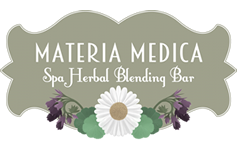What are they? Are they regulated?
The topic we are discussing today is the mysterious ingredient, fragrance. We all want our products and ourselves to smell nice but at what cost? This simple word listed on the ingredient label can contain over 100 undisclosed, toxic ingredients and most people have no clue.
A fragrance can be comprised of natural and/or synthetic ingredients ranging from tens to hundreds of individual chemicals like phthalates, which are used to make the scent last longer. Some of these compounds have the ability to penetrate through the skin and travel directly into the bloodstream, increasing our risk for systemic health concerns.
Why aren’t these compounds disclosed? The safety of fragrance chemicals is not determined, monitored or safe-guarded by any governmental agency, globally. Instead, the fragrance industry has been trusted to self-regulate and to establish its own safety guidelines for the use of fragrance chemicals through the International Fragrance Association (IFRA). Fragrance is regarded as a ‘trade secret’ and companies do not have to disclose any further information to consumers.
How are they harmful?
Sadly, even when we see the term ‘Natural Fragrance’ this doesn’t mean it is any less toxic than its synthetic counterpart. Most are found to be derived from petroleum and regulations are still lacking for these compounds. So, let’s talk about how they are harmful.
Take phthalates, we now see a lot of products stating they are phthalate free because of its risk. This ingredient alone sparks health concerns like cancer, reproductive and developmental toxicity, endocrine disruption, birth defects & respiratory problems.
Acetaldehyde adversely affects kidneys and the reproductive, nervous and respiratory systems. Benzophenone is linked to endocrine disruption and organ system toxicity and experimental studies suggest benzophenone may lead to several kinds of tumors.
Alternatives to look for.
Depending on lifestyle, occupation, environmental exposures, water pollution and other considerations it is challenging to completely eradicate fragrance from our lives. Some startling statistics show that the use of fragrance in every day products is increasing; 96% percent of shampoos, 98% of conditioners and hair styling products, 91% percent of antiperspirants, 95% of shaving products, 83% of moisturizers, and 63% of sunscreens contain fragrance.
The International Fragrance Association (IFRA) lists 3,059 materials that are reported as being used in fragrance compounds. Other countries are taking note of these harmful ingredients and requiring either clear labeling on products or a complete ban. Currently, the EU (European Union) bans 1,328 chemicals from cosmetics that are known or suspected to cause cancer, genetic mutation, reproductive harm or birth defects. In comparison, the U.S. FDA has only banned or restricted 11 chemicals from cosmetics.
Until we are able to shift the perspectives of ruling government agencies I encourage you to stand up for your health by supporting locally made products, research chemical free or toxin free companies who embrace a fully transparent label of ingredients. Always, before you purchase ANY product, food or cosmetic, take a moment to glance at the FULL ingredient label. DO NOT take only the information given to you on the front of the box or product, this information is often misleading.
Conclusion.
Thank you for watching my video! Be on the lookout for more topics, like this one, in my series ‘Deconstructing Skincare.’ Together we can make the shift toward better health and clean beauty.
Resources:
*http://www.womensvoices.org/wp-content/uploads/2019/09/fragrance_flyer_WEB.pdf
* IFRA Transparency List: Available at: http://www.ifraorg.org/en-us/ingredients
*https://www.forceofnatureclean.com/truth-about-toxic-fragrances/
*https://www.ewg.org/enviroblog/2013/02/natural-extracts-can-trigger-allergies
*https://www.safecosmetics.org/get-the-facts/chemicals-of-concern/fragrance/
*https://www.cdc.gov/niosh/topics/skin/
*https://eur-lex.europa.eu/legal-content/EN/TXT/?uri=CELEX:32009R1223
*https://www.fda.gov/cosmetics/cosmetics-labeling/trade-secret-ingredients


